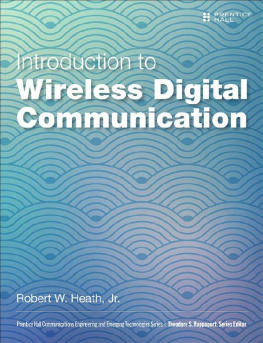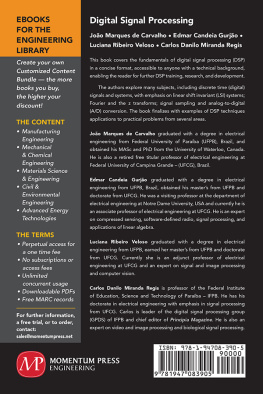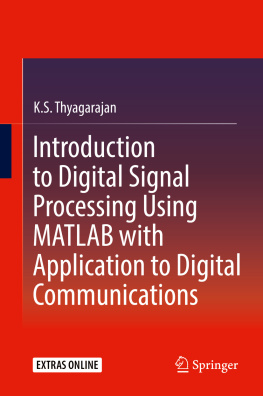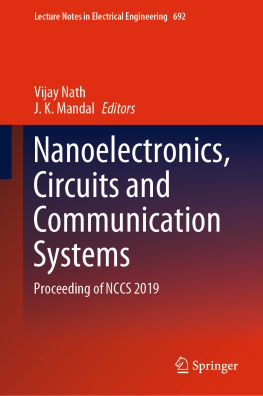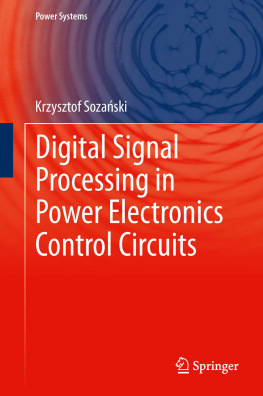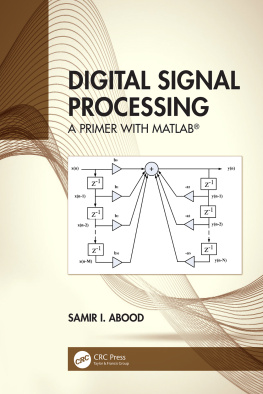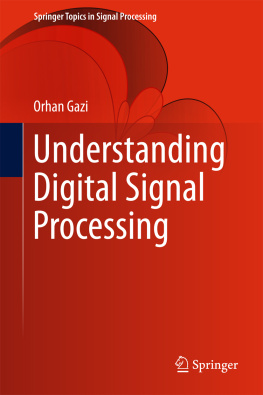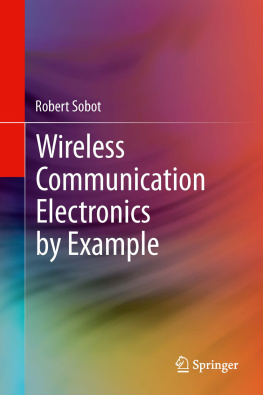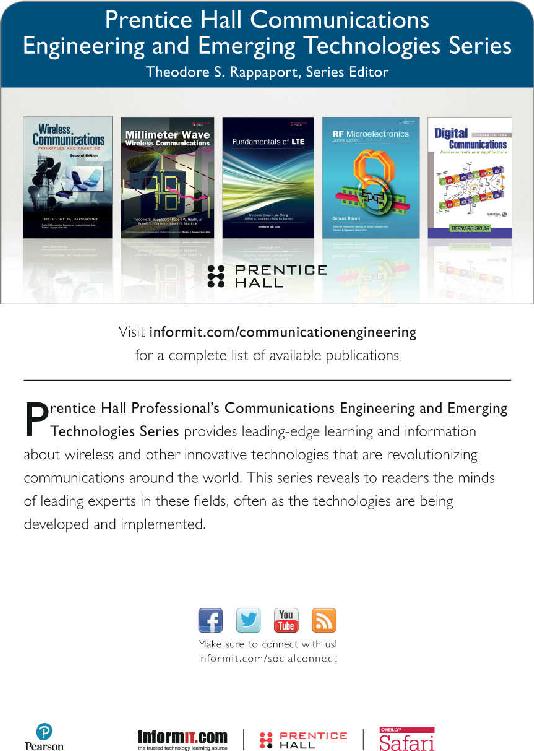Robert W. Heath Jr. - Introduction to Wireless Digital Communication: A Signal Processing Perspective
Here you can read online Robert W. Heath Jr. - Introduction to Wireless Digital Communication: A Signal Processing Perspective full text of the book (entire story) in english for free. Download pdf and epub, get meaning, cover and reviews about this ebook. year: 2017, publisher: Prentice Hall, genre: Science. Description of the work, (preface) as well as reviews are available. Best literature library LitArk.com created for fans of good reading and offers a wide selection of genres:
Romance novel
Science fiction
Adventure
Detective
Science
History
Home and family
Prose
Art
Politics
Computer
Non-fiction
Religion
Business
Children
Humor
Choose a favorite category and find really read worthwhile books. Enjoy immersion in the world of imagination, feel the emotions of the characters or learn something new for yourself, make an fascinating discovery.
- Book:Introduction to Wireless Digital Communication: A Signal Processing Perspective
- Author:
- Publisher:Prentice Hall
- Genre:
- Year:2017
- Rating:4 / 5
- Favourites:Add to favourites
- Your mark:
Introduction to Wireless Digital Communication: A Signal Processing Perspective: summary, description and annotation
We offer to read an annotation, description, summary or preface (depends on what the author of the book "Introduction to Wireless Digital Communication: A Signal Processing Perspective" wrote himself). If you haven't found the necessary information about the book — write in the comments, we will try to find it.
The Accessible Guide to Modern Wireless Communication for Undergraduates, Graduates, and Practicing Electrical Engineers
Wireless communication is a critical discipline of electrical engineering and computer science, yet the concepts have remained elusive for students who are not specialists in the area. This text makes digital communication and receiver algorithms for wireless communication broadly accessible to undergraduates, graduates, and practicing electrical engineers. Notably, the book builds on a signal processing foundation and does not require prior courses on analog or digital communication.
Introduction to Wireless Digital Communication establishes the principles of communication, from a digital signal processing perspective, including key mathematical background, transmitter and receiver signal processing algorithms, channel models, and generalizations to multiple antennas. Robert Heaths less is more approach focuses on typical solutions to common problems in wireless engineering.
Heath presents digital communication fundamentals from a signal processing perspective, focusing on the complex pulse amplitude modulation approach used in most commercial wireless systems. He describes specific receiver algorithms for implementing wireless communication links, including synchronization, carrier frequency offset estimation, channel estimation, and equalization. While most concepts are presented for systems with single transmit and receive antennas, Heath concludes by extending those concepts to contemporary MIMO systems.
To promote learning, each chapter includes previews, bullet-point summaries, examples, and numerous homework problems to help readers test their knowledge.
- Basics of wireless communication: applications, history, and the central role of signal processing
- Digital communication essentials: components, channels, distortion, coding/decoding, encryption, and modulation/demodulation
- Signal processing: linear time invariant systems, probability/random processes, Fourier transforms, derivation of complex baseband signal representation and equivalent channels, and multi-rate signal processing
- Least-squared estimation techniques that build on the linear algebra typically taught to electrical engineering undergraduates
- Complex pulse amplitude modulation: symbol mapping, constellations, signal bandwidth, and noise
- Synchronization, including symbol, frame, and carrier frequency offset
- Frequency selective channel estimation and equalization
- MIMO techniques using multiple transmit and/or receive antennas, including SIMO, MISO, and MIMO-OFDM
Register your product at informit.com/register for convenient access to downloads, updates, and corrections as they become available.
Robert W. Heath Jr.: author's other books
Who wrote Introduction to Wireless Digital Communication: A Signal Processing Perspective? Find out the surname, the name of the author of the book and a list of all author's works by series.

